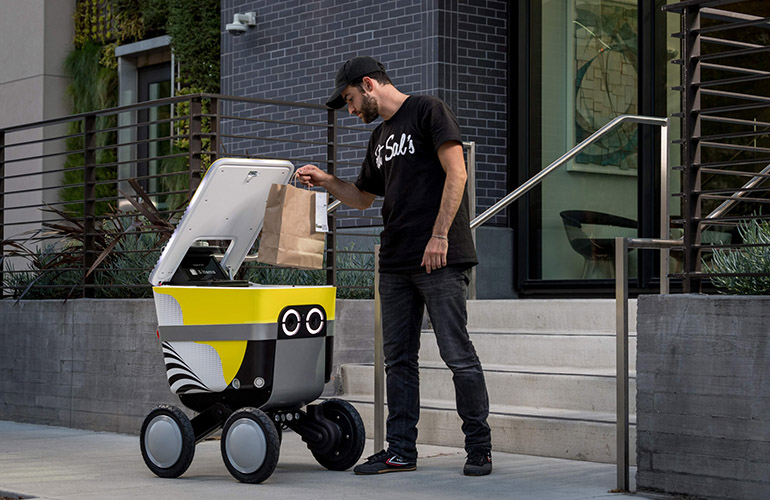In a groundbreaking move that highlights the evolving landscape of autonomous transportation, Nuro has unveiled its third-generation delivery robot, featuring an innovative external airbag designed to protect pedestrians in the event of a collision. This latest iteration represents a significant leap forward in addressing safety concerns surrounding driverless vehicles.
A Safety-First Approach to Autonomous Delivery
Founded in 2016 by former Google self-driving car experts Dave Ferguson and Jiajong Zhu, Nuro has quickly emerged as a pioneer in autonomous delivery technology. With a valuation of $8.6 billion, the company is not just another startup, but a serious contender in the future of transportation and logistics.
The most eye-catching feature of the new vehicle is undoubtedly its external airbag—essentially an air mattress mounted on the vehicle's front. While The Verge has raised questions about the effectiveness of such a safety measure at speeds of 40 km/h, the intent is clear: Nuro is taking pedestrian safety seriously in a way few autonomous vehicle manufacturers have attempted.
More Than Just a Safety Gimmick
Beyond the innovative airbag, the third-generation vehicle boasts several significant improvements:
- Increased cargo space
- Temperature-controlled compartments for hot and cold food deliveries
- Compact design—roughly half the size of a compact sedan
- Expanded operational areas in the southwestern United States
Manufacturing and Technical Specifications
Nuro plans to produce these vehicles at a new Nevada plant, with construction expected to be completed by the end of the year. In a strategic move, the company has partnered with Chinese manufacturer BYD to produce electric motors and batteries in the United States.
Learning from Past Autonomous Vehicle Challenges
The development comes in the wake of previous autonomous vehicle safety concerns, most notably the 2018 Uber accident in Arizona that resulted in a pedestrian fatality. That incident exposed critical gaps in autonomous vehicle programming, particularly in responding to unexpected pedestrian movements.
Nuro's approach seems to be a direct response to such challenges, prioritizing safety through both technological programming and physical safety features.
The Broader Implications
This innovation represents more than just a technical improvement. It's a statement about the future of autonomous transportation—a future where technology and human safety are not mutually exclusive, but deeply interconnected.
The external airbag might seem unconventional, but it symbolizes a crucial shift in thinking. Instead of treating autonomous vehicles as purely technological achievements, Nuro is positioning them as community-considerate solutions that prioritize human life.
As autonomous delivery vehicles become increasingly common, Nuro's approach could set a new standard for safety and public interaction. The external airbag might be just the beginning of a more empathetic approach to autonomous technology.
While questions remain about the long-term effectiveness of such safety measures, Nuro has undeniably sparked an important conversation about how autonomous vehicles can coexist safely with pedestrians and cyclists.
The future of delivery is not just about efficiency—it's about creating systems that respect and protect human life at every turn.


















